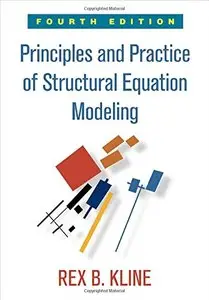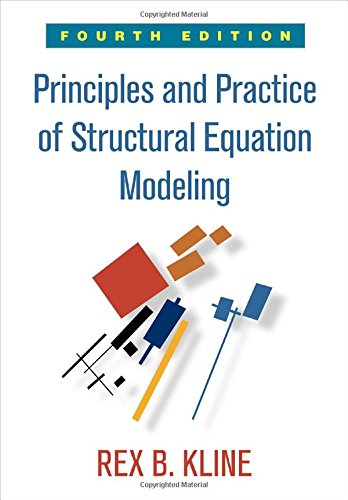Principles and Practice of Structural Equation Modeling, Fourth Edition (Methodology in the Social Sciences) by Rex B. Kline PhD
English | 2015 | ISBN: 146252334X, 1462523358 | 534 pages | PDF | 5,9 MB
English | 2015 | ISBN: 146252334X, 1462523358 | 534 pages | PDF | 5,9 MB
Emphasizing concepts and rationale over mathematical minutiae, this is the most widely used, complete, and accessible structural equation modeling (SEM) text. Continuing the tradition of using real data examples from a variety of disciplines, the significantly revised fourth edition incorporates recent developments such as Pearl's graphing theory and the structural causal model (SCM), measurement invariance, and more. Readers gain a comprehensive understanding of all phases of SEM, from data collection and screening to the interpretation and reporting of the results. Learning is enhanced by exercises with answers, rules to remember, and topic boxes. The companion website supplies data, syntax, and output for the book's examples–now including files for Amos, EQS, LISREL, Mplus, Stata, and R (lavaan).
New to This Edition
*Extensively revised to cover important new topics: Pearl's graphing theory and the SCM, causal inference frameworks, conditional process modeling, path models for longitudinal data, item response theory, and more.
*Chapters on best practices in all stages of SEM, measurement invariance in confirmatory factor analysis, and significance testing issues and bootstrapping.
*Expanded coverage of psychometrics.
*Additional computer tools: online files for all detailed examples, previously provided in EQS, LISREL, and Mplus, are now also given in Amos, Stata, and R (lavaan).
*Reorganized to cover the specification, identification, and analysis of observed variable models separately from latent variable models.
Pedagogical Features
*Exercises with answers, plus end-of-chapter annotated lists of further reading.
*Real examples of troublesome data, demonstrating how to handle typical problems in analyses.
*Topic boxes on specialized issues, such as causes of nonpositive definite correlations.
*Boxed rules to remember.
*Website promoting a learn-by-doing approach, including syntax and data files for six widely used SEM computer tools.
Note: My nickname - interes



